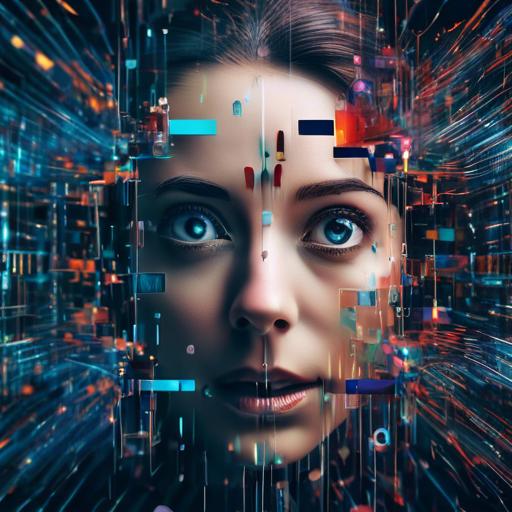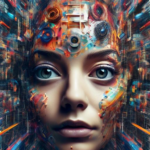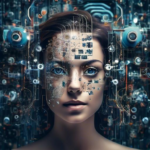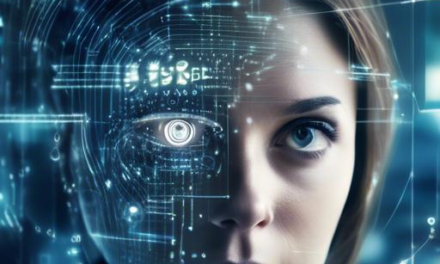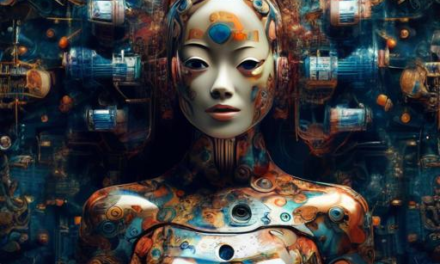In the ever-evolving world of artificial intelligence, a brushstroke of innovation meets the canvas of creativity, giving birth to a new realm: AI-generated art. As mesmerizing as these digital masterpieces are, they also bring forth a palette of ethical dilemmas that artists and technologists must navigate with care. Imagine a landscape where machines dream in pixels, yet human values and integrity must still frame the picture. This article seeks to be your guiding star in this uncharted territory, helping you avoid the ethical pitfalls that could tarnish the vibrant possibilities of AI art. We’ll walk together through this artistic labyrinth, illuminating the principles that ensure our journey remains true to the core of authentic creativity and respect—for creators, consumers, and the very essence of art itself. Welcome to your trusty guide on safeguarding the soul of artistic expression in the age of algorithms.
Table of Contents
- Understanding the Ethical Landscape of AI Art
- Ensuring Transparency with Audiences
- Navigating Copyright and Intellectual Property
- Promoting Diversity and Inclusion in Datasets
- Prioritizing Consent and Data Privacy
- Mitigating Bias in Algorithm Design
- Fostering Responsible AI Art Creation
- In Conclusion
Understanding the Ethical Landscape of AI Art
It’s essential to consider the ethical landscape when diving into the creation and dissemination of AI-generated art. One primary concern revolves around **intellectual property (IP) rights**. Since AI systems often learn from large datasets of existing artwork, questions arise about the originality and ownership of the resultant pieces. To navigate this, artists should ensure they have the legal rights to the datasets they use and give credit to the source material whenever possible.
Another significant ethical issue is **bias in AI algorithms**. AI models can inadvertently perpetuate stereotypes or misrepresent certain groups if trained on biased datasets. Artists and developers must actively seek diverse and representative data sources to train their AI, continuously auditing and updating models to minimize biases.
- Utilize diverse and inclusive datasets
- Regularly audit AI models for bias
- Engage with communities to understand the representation better
Transparency is key for fostering trust. Artists should aim to be **open about their use of AI** in creating art. Clearly communicating the role AI played in the art’s creation allows audiences to appreciate the work while understanding its foundation. This transparency also extends to disclosing the limitations and potential flaws of the AI models used.
Lastly, consider the **societal impacts** of AI art. As AI systems become more integrated into art creation, there’s the potential displacement of traditional artists and changes in how art is valued. Engaging in conversations about these impacts with peers and the wider community can help identify measures to mitigate any adverse effects.
| Consideration | Action |
|---|---|
| Intellectual Property | Ensure legal rights to datasets; give credit |
| Bias in Algorithms | Use diverse data; regular audits |
| Transparency | Communicate the role of AI openly |
| Societal Impact | Engage with communities |
Ensuring Transparency with Audiences
Audiences today demand clarity and honesty, making transparency crucial in the realm of AI art. As creators, it is our responsibility to communicate how AI tools influence our work. **Open communication** can help bridge the gap between creative intention and audience perception.
- **Disclose the tools:** Clearly stating which AI tools were used in your projects can demystify the technology for your audience.
- **Explain your process:** Share insights into how AI contributed to your creative journey, whether it’s generating ideas, drafting compositions, or enhancing final pieces.
One practical way to ensure transparency is by integrating informative captions or metadata with your artworks. This approach not only fosters trust but also educates your audience about the evolving landscape of digital creation. Consider adding detailed captions on platforms like Instagram or embedding metadata in digital files available for download.
| Transparency Tips | Details |
|---|---|
| Tool Disclosure | Mention specific AI tools used |
| Process Explanation | Share steps and role of AI |
| Metadata Integration | Include details in digital files |
Giving credit where it’s due also plays a pivotal role. If collaborating with AI researchers or using open-source algorithms, always acknowledge their contributions in your work. This practice not only respects creators but also fosters a collaborative community atmosphere.
By maintaining a high level of transparency, artists empower their audience to appreciate the nuances of AI-enhanced creativity, fostering a deeper connection rooted in trust and understanding.
Navigating Copyright and Intellectual Property
Creating AI-generated art requires a keen understanding of the nuances of copyright and intellectual property laws. **Protecting original works** while **respecting the rights of others** forms the crux of ethical AI art creation. Below are some vital insights to help guide you through this complex landscape.
Key considerations include:
- Source Materials: Always ensure the source materials you’re using are either public domain, under an open license, or you have explicit permission from the copyright holders.
- Attribution: Giving credit where it is due not only respects the original creator but also builds trust within the community.
- Derivative Works: Understand the difference between inspiration and copying. If your AI art closely mimics an existing piece, it may be considered a derivative work, prompting the need for permission from the original artist.
Below is a comparison table illustrating the typical distinctions between types of intellectual property.
| Type | Description | Examples |
|---|---|---|
| Copyrights | Legal protection for original works of authorship | Books, Music, Software Source Code |
| Trademarks | Protection for symbols, names, and slogans used in commerce | Logos, Brand Names |
| Patents | Exclusive rights to inventions | New Machinery, Pharmaceuticals |
| Trade Secrets | Confidential business information | Recipes, Proprietary Processes |
Adhering to these guidelines not only ensures legal compliance but also promotes a culture of **ethical creativity**. Remember, being diligent about these details can protect both your work and your reputation in the art community. Stay informed, stay creative, and above all, stay ethical.
Promoting Diversity and Inclusion in Datasets
Creating AI models with diversity and inclusion in mind involves intentional and thoughtful curation of datasets. It’s crucial to ensure that the datasets used for AI art are representative of various cultures, genders, ages, and more. This prevents the perpetuation of biases and provides a richer, more nuanced output from the AI, fostering ethical creativity.
Key Practices to Promote Diversity and Inclusion:
- Data Source Variety: Incorporate images, styles, and artifacts from a wide range of communities worldwide.
- Inclusive Labeling: Ensure labels and metadata reflect diverse backgrounds accurately, avoiding stereotypes.
- Community Input: Engage with diverse communities to get feedback and include their perspectives in dataset curation.
- Minimize Harmful Content: Scrutinize your data for content that reinforces biases or is culturally insensitive.
Another powerful tool is using **diversity audits** to regularly review datasets. These audits can help identify potential gaps in representation and provide insights into areas that need improvement. Below is a simplified example of how such an audit might look:
| Audit Component | Current Status | Action Needed |
|---|---|---|
| Cultural Representation | High presence of Western art | Include art from Asian, African, and Latin American cultures |
| Gender Balance | 60% male, 40% female | Increase female representation, include non-binary examples |
| Age Diversity | Predominantly young adults | Include more children and elderly figures |
The selection process must be free from implicit biases that could skew the representation. Methods like blind selection and algorithmic bias detection can play a crucial role in ensuring fairness. By taking proactive steps, we can develop AI art models that celebrate the diversity of human creativity and push the boundaries of ethical AI practices.
Prioritizing Consent and Data Privacy
Protecting user data and obtaining explicit permission are cornerstones of ethical AI art creation. Artists and developers must establish transparent practices to ensure that all users feel secure and respected. This begins with a clear explanation of how data will be used, stored, and shared.
- Transparency: Make all terms and conditions easily accessible and written in plain language to avoid confusion.
- Opt-in Policies: Implement an opt-in mechanism for data use, rather than assuming consent. Users should actively choose to share their data.
- Data Minimization: Collect only the data that is absolutely necessary for the creation process. Avoid unnecessary data that could compromise user privacy.
Securing explicit consent involves more than just a checkbox on a form. It requires ongoing communication and updates about any changes in how data is used. This could mean regular email updates or notifications within the app itself.
| Best Practices | Description |
|---|---|
| Clear Communication | Ensure users understand how their data is used through detailed explanations. |
| Consistent Updates | Regularly inform users about data policy changes directly. |
| User Control | Allow users to easily modify or withdraw their consent at any stage. |
Data security is another important aspect. Use encryption and other security measures to protect user information from unauthorized access. This safeguards both the users and creators from potential breaches that could tarnish the integrity of the artistic endeavor.
Practicing these principles helps to build trust, ensuring that the creation of AI art is not only innovative but also principled and respectful towards all involved. The ethics of consent and privacy isn’t merely a regulatory concern; it’s about creating a safe and engaging space for creativity to flourish.
Mitigating Bias in Algorithm Design
Designing algorithms without bias is crucial for maintaining ethical standards in AI art. To create fair and inclusive AI models, it’s essential to recognize and address inherent biases present in training data and development processes.
Understand and Identify Sources of Bias
- Historical Data: AI models learn from data, and if that dataset contains historical biases, these will be reflected in the art generated by the model.
- Selection Bias: Ensure that the datasets used are diverse and representative of various groups to prevent overfitting to a particular style or demographic.
- Algorithmic Processes: Regularly audit the algorithm’s processes to identify steps where biases might be introduced.
Build Diverse Teams
A diverse team can provide various perspectives and insights that may not be apparent to a more homogenous group. Different backgrounds and experiences can help in:
- Recognizing potential biases that might be overlooked.
- Developing more inclusive algorithms that cater to a wider audience.
- Creating art that reflects a variety of cultural and social experiences.
Regular Auditing and Feedback Loops
Establish a system for regular auditing and incorporate feedback loops to continuously improve the algorithm. This can be done by:
- Implementing bias detection tools to identify and mitigate bias.
- Encouraging community input to gain diverse perspectives.
- Updating the dataset periodically to include new and diverse data sources.
Transparency and Accountability
Adopt transparent practices and remain accountable for the outputs your AI generates. Sharing your methodologies and being open to scrutiny can foster trust and ensure ethical standards are upheld. Consider:
- Publishing detailed documentation about the data sources and algorithmic processes used.
- Engaging with the public to explain how biases are detected and mitigated.
- Establishing clear guidelines and policies around ethical AI use.
| Aspect | Actions |
|---|---|
| Data Sourcing | Ensure diversity in datasets |
| Development Process | Audit for bias at each step |
| Team Composition | Include diverse backgrounds |
| Feedback Mechanism | Regular updates and audits |
| Transparency | Openly share methodologies |
By focusing on these strategies, algorithm designers can significantly reduce biases, promoting ethical and inclusive AI art creation. Embracing diversity and transparency not only improves the quality of AI-generated art, but also ensures it resonates more equitably across different cultures and communities.
Fostering Responsible AI Art Creation
To ensure the ethical creation of AI-generated art, it is imperative to cultivate a responsible framework that respects both the original artists and societal values. One way to achieve this is by maintaining transparency in the algorithms and datasets used to train AI models. **Transparency** fosters trust and aids in identifying biases that may exist in the dataset.
A key aspect of responsible AI art creation involves sourcing training data thoughtfully. This means having a clear consent protocol and ensuring that the sources are diverse and representative. Consider adopting a policy where you:
- Seek permission from original artists
- Use public domain or open-access repositories
- Avoid biased or culturally insensitive material
**Inclusive Representation** is another cornerstone of ethical AI art. Ensure that AI artworks don’t reinforce harmful stereotypes or marginalize communities. This can be done by regularly auditing generated content and involving a diverse team in the review process.
| Aspect | Action |
|---|---|
| Transparency | Disclose training data and algorithms |
| Source Ethical Data | Ensure consent and diversity |
| Representation | Avoid stereotypes and biases |
Lastly, educate your audience and collaborators about the ethical considerations and limitations of AI-generated art. By doing so, you not only raise awareness but also invite critical dialogue, fostering a community that values and upholds ethical standards in AI art creation.
In Conclusion
navigating the ethical landscape of AI art can be a daunting task, but with the right mindset and approach, it is possible to avoid the pitfalls that may arise. By staying informed, asking the right questions, and keeping an open dialogue with stakeholders, we can ensure that our creations are not only innovative and groundbreaking, but also socially responsible and ethically sound. Let’s continue to push the boundaries of AI art while keeping our moral compass firmly in hand. Together, we can create a world where art and technology coexist harmoniously, inspiring and uplifting society for generations to come. Remember, the future of AI art is in our hands. Let’s make it a bright and ethical one.

